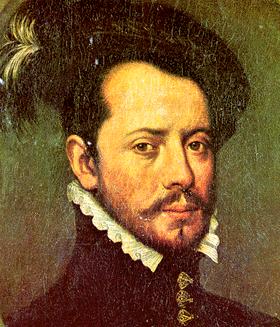*Image Credit: Wikimedia Commons The most famous capital in the New World finally succumbed to Spanish conquistadors on August 13, 1521. After nearly two centuries as the center of the Aztec Empire, Tenochtitlan fell to Hernan Cortes – and would soon be destroyed in favor of a city built along the lines of European design. Once complete, the reconstructed streets and buildings would form the center of colonial government, giving rise to the most populous metropolis in the world: Mexico City. When the Aztecs arrived in the Mexico Valley around 1200 CE, the lush lakeside land had been occupied for thousands of years. Having come from arid plains – the southwestern United States and northern Mexico today – they hoped to displace the resident Chichimecs and take advantage of the resources available to stabilize their own society. Nestling on Chapultepec, a steep hill with poor terrain for agriculture, the Aztecs quickly found themselves servants of the nearby kingdom of Culhuacan. Forced to leave the land after a fierce battle, legend has it the Aztecs wandered out into the desert in search of a new home. With little food and water, leaders prayed and sacrificed to their gods in search of favor until a vision appeared: the god Huitzilopochtli directed them to search for a land where an eagle clasped a snake in its beak while resting on a cactus. In 1325, the Aztecs found just such a place – an island jutting above heavy swampland in Lake Texcoco. Despite the engineering challenges, the new city of Tenochtitlan grew quickly, fortified by the seemingly poor ground from which it sprang up. (Historians believe the marshes acted as a sort of extended moat, as the city could only be accessed by boat.) Tenochtitalan grew to a population of more than 200,000 by the time Cortes and his men arrived, due in large part to careful planning. Divided into four zones, each with 20 districts, the Aztecs took great care to ensure every part of Tenochtitlan was accessible by both canoe and via walking paths. Radiating from a center housing the Templo Mayor and the palace of the royal family, three main avenues wide enough for ten horses extended to the edges of the island. From there, dozens of residential areas sprouted up around large markets, tlatchti courts (a sport involving a ball played through a stone loop near the top of a wall) and minor temples for residents to offer sacrifices. In late 1519, King Moctezuma II presided over a ceremony welcoming Cortes to the island. Following Aztec tradition, the conquistador received extravagant gifts – gold and fine pottery – and a tour of the heart of Tenochtitlan. Cortes later stated he felt the reception a case of mistaken identity, that the Aztecs believed him to be a representative or even an incarnation of Quetzlcoatl, their feathered serpent god. Evidence suggests it might instead have been viewed by the Aztecs as an opportunity for Moctezuma to spy on the new arrivals — the Spanish had massacred thousands along the way to Tenochtitlan — in order to determine their weaknesses. Over the course of the following six months, Cortes would eventually flee the city as Moctezuma was stoned to death by his people. The Noche Triste, as the night of June 30, 1520 would come to be called, ended with the Spaniards barely making it out of Tenochtitlan – and only after losing hundreds of men. The Aztecs and Spanish were now engaged in an all-out conflict. Receiving reinforcements from Cuba and allied tribes in the region, Cortes methodically cut off supply routes to the massive city. On August 13, 1521 – following more than a year of battles with the Aztecs – Cortes captured King Cuauhtemoc and marched to the center of Tenochtitlan. The native empire had been officially engulfed, with the Spanish explorer claiming the land for his country and renaming it Mexico City.
August 13, 1521 CE – Hernan Cortes Conquers the Aztec Capital of Tenochtitlan
*Image Credit: Wikimedia Commons The most famous capital in the New World finally succumbed to Spanish conquistadors on August 13, 1521. After nearly two centuries as the center of the…
